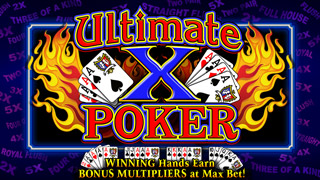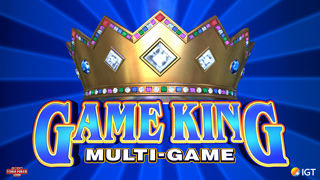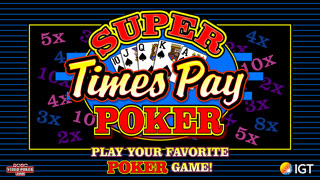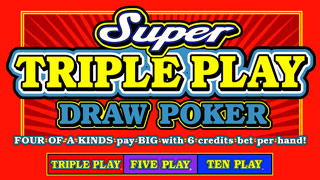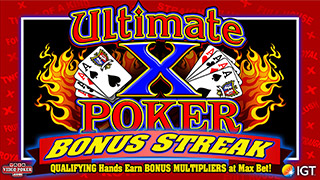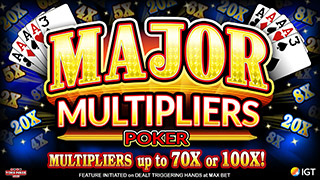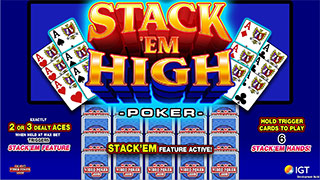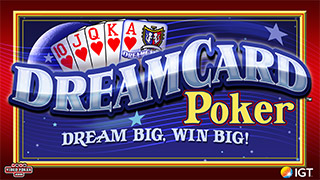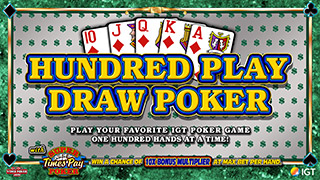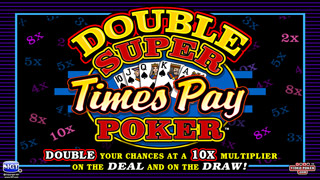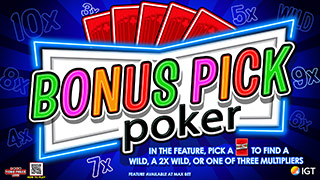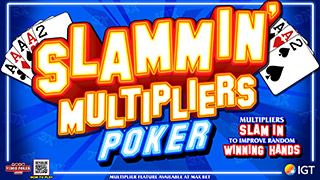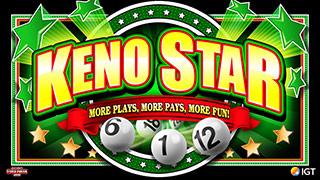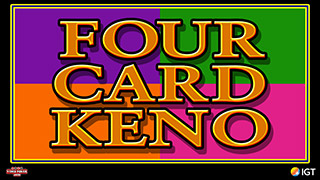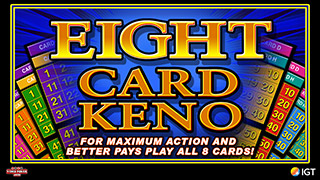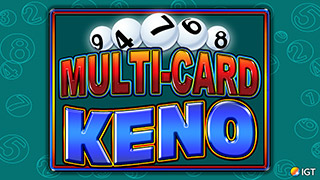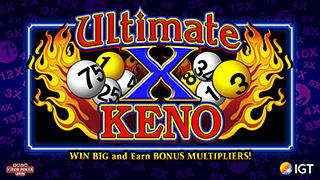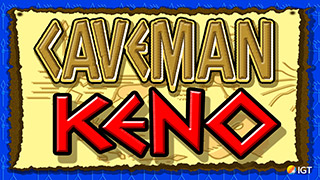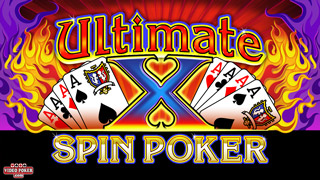number of hands to reach the EV
-
moneyla
- Forum Rookie
- Posts: 46
- Joined: Thu Jun 02, 2011 3:02 am
number of hands to reach the EV
is there a particular number of hands that have to be played to reach the "expected value" of a video poker game? of is the expected value present on each and every hand from the first hand? To put the question differently: If I am playing 8/5 bonus poker with a return of 99.2 percent, after now many hands would I expect to get 99/2% of my bankroll? Or, is there no way to figure this?
-
shadowman
- Video Poker Master
- Posts: 3587
- Joined: Mon Oct 23, 2006 5:42 pm
A person approaches their expected return over time. Notice the use of "their" rather than "the". Your expected return will be different than another person. It's a combination of the ER of the machines you play and the strategy you employ.
And, don't think of it as "reach". That's more of a linear view of the world. Like driving to a destination. In the case of VP, you kind of circle the destination. You can be above or below the ER with almost equal probability. You just narrow the difference slowly over time. Here's one way to look at long term.
http://www.west-point.org/users/usma195 ... ank_NO.htm
Here's some comments that may help.
http://www.west-point.org/users/usma195 ... FAQ_LT.htm
"The long term is not a magical time where everything lines up perfectly and my results are exactly equal to the expected value."
And, don't think of it as "reach". That's more of a linear view of the world. Like driving to a destination. In the case of VP, you kind of circle the destination. You can be above or below the ER with almost equal probability. You just narrow the difference slowly over time. Here's one way to look at long term.
http://www.west-point.org/users/usma195 ... ank_NO.htm
Here's some comments that may help.
http://www.west-point.org/users/usma195 ... FAQ_LT.htm
"The long term is not a magical time where everything lines up perfectly and my results are exactly equal to the expected value."
-
backsider
- VP Veteran
- Posts: 578
- Joined: Sun May 08, 2011 11:35 pm
In my estimation the er of any machine isnt relevant. What do I really care if its 99.2% or 99.9%? Im going to get the hands Im going to get. I can see playing the better pay table when it comes to the same game, but just running around looking for a game that the sharpies claim is a better opportunity because of a .7% difference doesnt mean pee pee for the small time Im playing it.
I also dont buy into the concept here that a player gets closer to some mathematical expectation as they play. How do we know were not getting FURTHER from expectation as we get nothing but a bunch of losing sessions under our belts? Thats one big reason I have not played since I was dealt the 5play royal last month. On that game, Im way over this "expectation" that shadow says Ill get closer to the more I play. Why do I want to go backwards just so I can put the math gods at ease?
I also dont buy into the concept here that a player gets closer to some mathematical expectation as they play. How do we know were not getting FURTHER from expectation as we get nothing but a bunch of losing sessions under our belts? Thats one big reason I have not played since I was dealt the 5play royal last month. On that game, Im way over this "expectation" that shadow says Ill get closer to the more I play. Why do I want to go backwards just so I can put the math gods at ease?
-
New2vp
- Video Poker Master
- Posts: 1878
- Joined: Mon Sep 11, 2006 4:02 am
is there a particular number of hands that have to be played to reach
the "expected value" of a video poker game?If you think about
it, exactly "reaching" any number including the "expected value" is not
really what you mean here. For example, what is the expected return of
this game. Later in your post, you say 99.2%, but a more precise
expected return is 99.1660%. So, what would it take to reach 99.1660%?
Well, that is not really the expected return either; to more places, it
would be 99.1659731872335124594873663703% and that's not exactly
correct either. Now, my point here is not to show off, but to
illustrate that your probably are not really interested in reaching the EXACT expected return, but would rather be
within some range of the expected return, like 99.2% plus or minus 1.0%,
or maybe 99.2% plus or minus 0.5%. When the question is rephrased, it
can be answered something like this: There is a 90% chance that when
playing computer perfect strategy, you can be within 0.5% of the
expected return after 2,262,276 hands, which of course changes if you change the size of the range of the probability of being in the range. This answer uses an
approximation formula that is relatively easy to apply. A more precise
answer could be calculated, but it is likely not worth the trouble for
the extra precision.
of is the expected value present on each and every hand
from the first hand?What many people do not understand, even in
explanations given by some "experts" is that expected value and expected
return are NOT long term concepts. Thus, your second question is more
on point. Expected value is a term that can be applied to each and
every hand that you play. What most people refer to as the expected
return of a game applies to the "expected value" of any hand BEFORE the
original 5 cards are dealt.
The "recipe" for expected value is:
1. Start with the list of possible outcomes.
2. Figure out the probability of each outcome.
3. Multiply each outcome in #1 by its probability in #2.
4. Add them up.
5. For the expected return, divide the sum in #4 by the amount bet, which is often 5 coins.
#1 is easy; it is the pay schedule shown on the front of every video
poker machine (if you add in a line for 0 coins when you don't hit any
of the paying hands).
#2 is harder to calculate, but that is where vp software like WinPoker,
etc., or online help like the Wizard of Odds or vpGenius can fill in the
blanks for you.
So, each and every hand (BEFORE THE CARDS ARE DEALT) has the same average value and same EXPECTED RETURN.
As the number in a sample increases, the ACTUAL average of the sample
has a higher chance of being within a given percentage of the EXPECTED
value.
Here is the long term concept: For any expected return (like 99.1660%),
any deviation from the expected return like (1%), and any probability
of success (like 90%), a sample size number can be determined BEFORE the
sample is taken so that we will be within that tolerance (here the
example was 1%) with the given probability of success (here the example
was 90%).So, if we really wanted to, we could determine what sample size was necessary to be 99.9% certain that our actual return would be within 0.01% (by the way, the answer is 22,634,032,693 hands), but knowing that is often of limited value. Now, it may make more sense to say something like, "I can play 1,000,000 hands. At that level of play, what range of expected return should I likely see, with say, 90% probability. Here, we can turn the formula around and find that the range is 99.1660% plus or minus 0.7520%. If we want to be 99.99% certain, the plus or minus changes to 1.7788%. Obviously most of the time, your deviation from ER is going to be considerably less than that. Half the time it will be plus or minus 0.3084% from the ER. For numbers of hands in small sessions, these formulas will not be entirely accurate, but it is still possible to analyze them. Video Poker for Winners software has a facility to do just that.
To
put the question differently: If I am playing 8/5 bonus poker with a
return of 99.2 percent, after now many hands would I expect to get 99/2%
of my bankroll?
Or, is there no way to figure this?You really mean 99.2% (approximately) of your coin in, not your bankroll.
But with your question thus modified, there is a way to figure it, but
it's not clear exactly what you would do with the information.
If you set your options to NEWEST POST FIRST, I gave the method to calculate this in a different thread, in a post from October 6, 2011
http://forum.videopoker.com/forum/forum ... 2&PN=4Some people try to take advantage of the limited ability that most of us
have to concentrate when the math gets a little too hairy and say
things like, since it takes too long to get within a reasonable
percentage of the return, the expected return makes no difference, but let's try an easy analogy. Presume you and I are both reasonably
accurate marksmen, and we are aiming at different targets on a wall some
50 yards away. My target is 95 feet from the left edge of the wall and
yours is 99 feet away. We both take an equal number of shots and both
miss our target by a few inches or feet, some to the left of our target
and some to the right. Then we find the average location of each
cluster of shots. It's a good bet that my average is not going to be
exactly 95 feet from the left edge of the wall and yours is not going to
be exactly 99 feet from the left edge of the wall. But it sure is
reasonable to presume that my average is going to be closer to 95 than
yours and yours will be closer to 99 than mine unless we are both
hopeless marksmen. I don't pretend that this analogy is perfect, but I
do hope to illustrate that if we shoot at a target with a 95% ER, we
will likely get a lower ACTUAL return than if we shoot at a target with
99% ER, assuming some level of skill (like knowing how to play
reasonably close to good strategy).
-
moneyla
- Forum Rookie
- Posts: 46
- Joined: Thu Jun 02, 2011 3:02 am
Thank you all very much for the information which is very helpfull. I now understand that I don't correctly use all of the terminology that is used to describe the game. I guess it comes down to this: If I play a game such as 9/6 Jacks or Better do I have a chance of walking away from the machine with 99.5% of the coin in after playing a few thousand dollars thru the machine one time? Of course I know that I could hit a royal on the first hand, or just have nothing but losers. I was just wondering if there is some ball park guesstimate. And the answer is there are plenty of ballpark estimates depending on the ball park. Did I get that much right??



